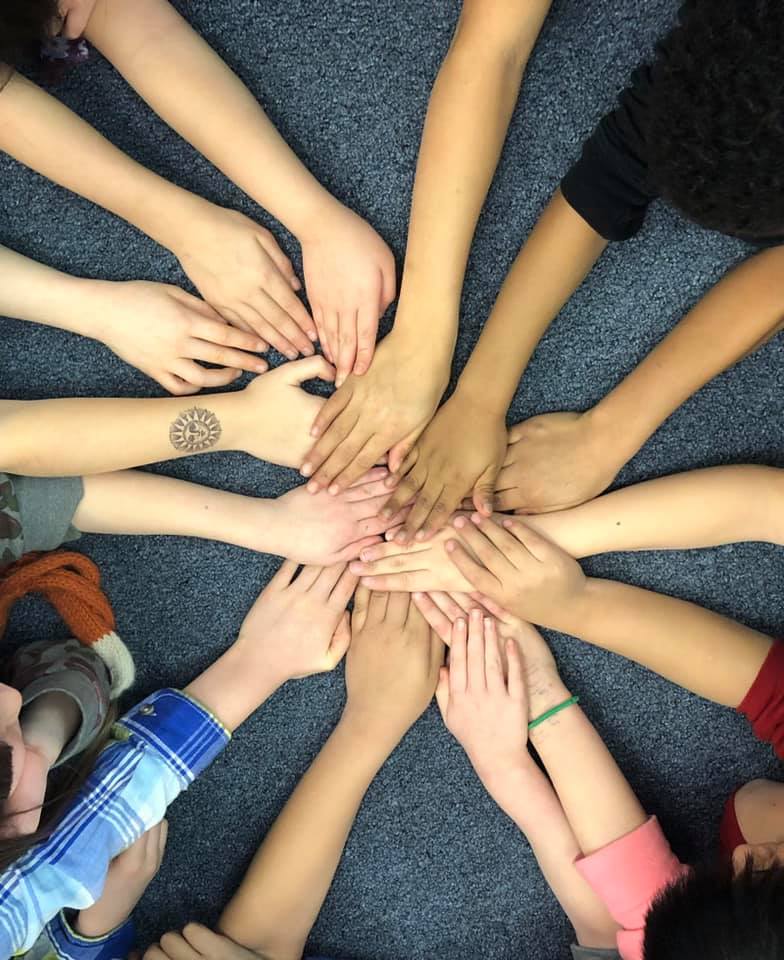
A Typical Classroom—A-typical Attitude
I heard a song today on the car radio. It was about “living to work” or “working to live.” Those were the actual lyrics. Also the basis for most of my thinking right now. A google search confirmed that this is definitely on many minds—turning up millions of hits for those six words.
The thing is,
Even young teachers don’t romanticize the work. They know it’s a hardship. More likely they had to overcome the haters. “Those that can’t do teach” “Teaching? Oh, I think you can do better.” Many may not understand the reality of teaching in our most challenging environments. Teachers at Low-Income Schools Deserve Respect.
My colleague and friend Kim invited me into her classroom recently. Kim has a typical rambunctious fifth-grade classroom in a city school. She is a highly respected veteran teacher, but a newbie at this school with many challenges and new leadership (again). I know a teacher who started here in September but is no longer here. I know this school’s reputation—and that of the kind, hard-working teachers.
That’s why Kim’s story, at a time in the school year known as Farch (yes, the F word), struck me as a narrative that I wanted to know more about. So many of us are frustrated and frankly, harboring attitudes that are quite negative—often harmful to our work. What part of her story makes for a significant positive telling?
I will never know the true answer. Attributing a person’s attitude to one thing is misguided and inaccurate. There are volumes of research on why schools and teachers fail or succeed. Mindset is attributed to many factors too. I picked out the following issues while in this classroom that may have something to do with sustaining positivity.

Feelings of trust and freedom are passed down from leadership
Kim attributes her feelings of value to leadership at her school. She is empowered to make timely classroom decisions herself that make the most sense to her students and situations (within reason). She isn’t always wondering, “What will the Principal say if I…?” She respects her principal and her principal respects her.
Awareness that the grass is not greener
Maintaining strong staff within a school community is important, but moving to other schools helps teachers grow and gain perspective. Kim has worked in several schools and as a district-wide leader. She chooses to be with kids as a classroom teacher. She has seen things go well and go off-track in all these roles and learned along the way.
Know your area of strength
Kim’s successful classrooms have usually included students of color as a majority. She has maintained high expectations at schools enrolling students with low economic status. These qualities and experiences are part of who she is and in who she chooses to teach. She is an anti-racism and a social justice warrior. She would not seek or accept an assignment to a less-challenged school as a promotion.
Understand your own beliefs and those of the educational system
Kim knows there are too many initiatives, too much bureaucracy, control, and standardization. She has questioned the direction taken by the district and she also knows that her voice matters. She does excellent work within the confines of the system and it is her way of serving and leading for social justice. She pushes back on what she knows is not right for kids at every opportunity.
Assets-based world view
Kim is able to first see the good in people. I am sure she experiences frustrations. She seems to take these in stride and is a model for
There was definitely magic there in her classroom even amongst the chaos. I kept looking for “the thing” that could sustain us all in this role. I don’t know what it is. Her narrative motivates her to stay vigilant in what she can do to help kids. It is her life and her work and she is far from resentful of it. I thanked her for being herself and liking what she does.

